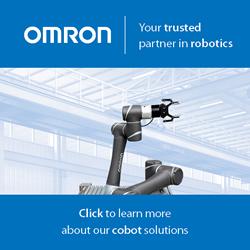Strongest Adoption of Computer Vision Technology seen in Consumer Electronics, Robotics and Machine Vision Applications
The commercialization of computer vision technology over the past few years has generated market opportunities in a variety of sectors.
The strongest adoption to date has been in consumer electronics, robotics and machine vision for industrial applications, and automotive, but early-stage markets for computer vision also exist in healthcare, security and surveillance, and sports and entertainment.
A recent report from Tractica indicates that growth will continue to be strong in all of these areas during the next several years, and the market intelligence firm forecasts that 182.7 million computer vision-enabled devices will be shipped each year globally by 2019.
"The degree to which computer vision technology is being adopted depends hugely on the application," says senior analyst Anand Joshi. "Applications like gaming, automotive, and machine vision for industrial applications are leading the way where market traction is already occurring. Other applications, such as security and surveillance, are just starting to emerge."
Joshi adds that the market is still wide open to new entrants and technology development. The sector is awash with dozens of startups and small companies who are pursuing the computer vision opportunity. In addition, established players such as Google, Microsoft, NVIDIA, and other large companies have already established research labs focusing on computer vision. Research papers that break previous records are published at conferences on a quarterly basis, and the technology ramp-up is rapid. Says Joshi, a huge amount of optimism exists in the industry and everyone is banking on huge growth in the future.
Tracticas report, "Computer Vision Technologies and Markets," examines the market dynamics, technology issues, and business opportunities surrounding computer vision and presents 5-year forecasts for the period from 2014 through 2019. Six application markets are analyzed in depth, and key industry players are profiled. Market forecasts, segmented by world region and vertical market, include hardware unit shipments, device pricing, and software revenue.
http://www.tractica.com/
Featured Product

Discover how human-robot collaboration can take flexibility to new heights!
Humans and robots can now share tasks - and this new partnership is on the verge of revolutionizing the production line. Today's drivers like data-driven services, decreasing product lifetimes and the need for product differentiation are putting flexibility paramount, and no technology is better suited to meet these needs than the Omron TM Series Collaborative Robot. With force feedback, collision detection technology and an intuitive, hand-guided teaching mechanism, the TM Series cobot is designed to work in immediate proximity to a human worker and is easier than ever to train on new tasks.
